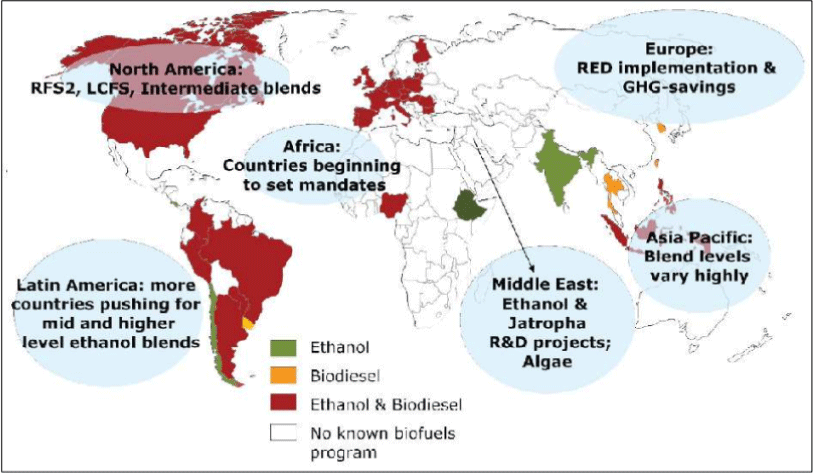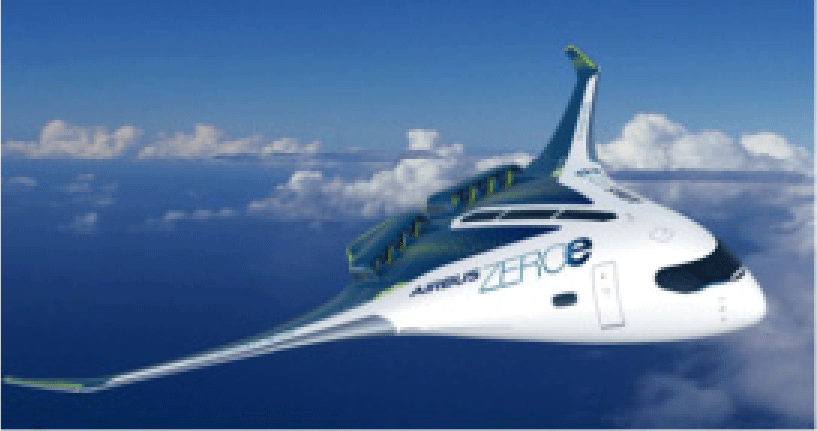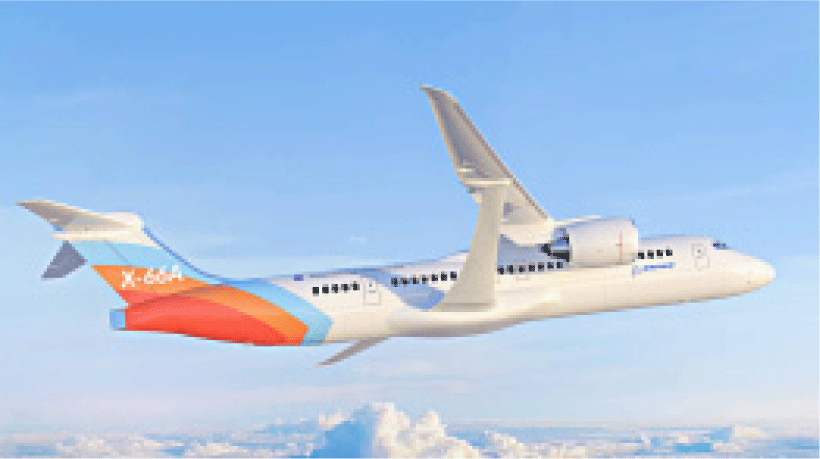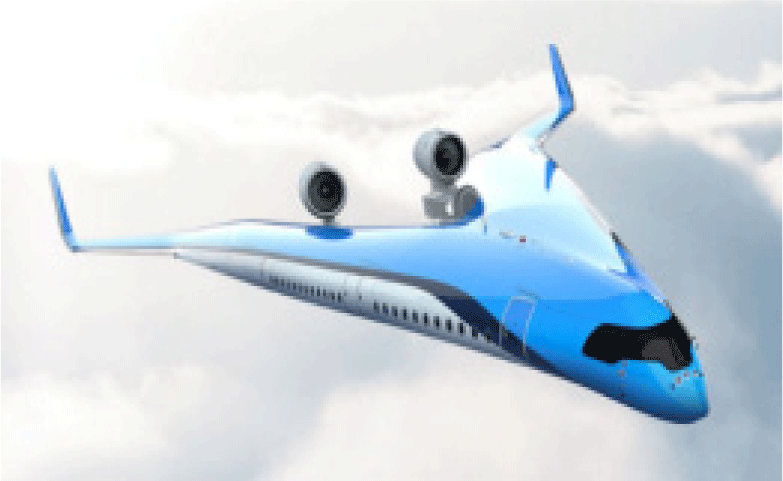I. Introduction
International efforts to solve the problem of climate change are growing. At the 21st Conference of the Parties (COP) of the United Nations Framework on Climate Change (UNFCCC) held in Paris in December 2015, all Parties agreed to limit the increase in global average temperature to within 2°C (Article 2 of the Paris Agreement) (United Nations, 2015). The purpose of this Agreement, including the enhancement of its implementation, is to strengthen the global response to the threat of climate change in the context of sustainable development and efforts to eradicate poverty (Kim, 2016). This includes pursuing efforts to limit the increase in global average temperature to well below 2°C above pre-industrial levels, and to pursue efforts to limit the temperature increase to 1.5°C above pre- industrial levels, recognizing that such efforts would significantly reduce the risks and impacts of climate change (Hwang and Kim, 2016). To this end, the UNFCCC requires all parties to prepare and submit Nationally Determined Contributions (NDC) for each country. Globally, there is a trend to develop and expand the use of biofuels as a means of diversifying energy sources due to the depletion of fossil fuels and reducing greenhouse gas emissions due to climate change (United Nations, 2015).
On the other hand, to solve the problem of climate change, the aviation sector as the need to reduce greenhouse gas emissions has emerged, the international community is active in regulating and responding. In the world aviation sector, the number of air passengers is over 3 billion, increasing by about 5% annually, and as a result, about 1.5 to 1.7 billion barrels of petroleum-based aviation fuel are used annually. There is an increasing interest in the management of emissions and greenhouse gases around airports and airports.
In particular, since the global aviation industry accounts for 2% of total CO2 emissions, measures to reduce greenhouse gas emissions are being reviewed 7-8). Therefore, the world aviation industry is strengthening its response to biofuels to reduce greenhouse gases, and in fact, it is expected that many airlines will use bio-jet fuel from around 2020 to 2030.
On 14 July 2021, the European Commission adopted a series of legislative proposals setting out how it intends to achieve climate neutrality in the EU by 2050, including the intermediate target of an at least 55% net reduction in greenhouse gas emissions by 2030 and the package proposes to revise several pieces of EU climate legislation, including the EU ETS, Effort Sharing Regulation, Transport and Land Use Legislation, setting out in real terms the ways in which the Commission intends to reach EU climate targets under the European Green Deal (European Commission, 2021).
II. Body
Policy actions and the efforts of industry have led to improvements in fuel efficiency over recent years. For instance, the amount of fuel burned per passenger dropped by 24% between 2005 and 2017 (EEA). However, these environmental benefits have been outpaced by a sustained growth in air traffic, with passengers in 2017 flying on average 60% further than in 2005 (European Commission, 2023). In 2017, direct emissions from the aviation sector in the European Union (EU) accounted for 3.8% of total CO2 emissions. Within the transport sector, aviation contributed 13.9% of greenhouse gas (GHG) emissions, making it the second-largest source of transport-related emissions after road transport. If global aviation were a country, it would rank in the top 10 emitters. Before the COVID-19 crisis, the International Civil Aviation Organization forecasted that by 2050 international aviation emissions could triple compared to 2015 (ICAO).
Aircraft release into the atmosphere not only gaseous compounds such as carbon dioxide CO2), nitrogen oxides (NOx), hydrocarbons (HC), sulfur dioxide (SO2) and water vapour (H2O), but also particulate material composed of ice crystals, soot particles (black carbon, BC) and sulfates (SO4) (Lee et al., 2021)
To achieve climate neutrality, the European Green Deal sets out the need to reduce transport emissions by 90% by 2050 (compared to 1990-levels). The aviation sector will have to contribute to the reduction (Matthias et al. 2020). Worldwide, flights produced 915 million tonnes of CO2 in 2019. Globally, humans produced over 43 billion tonnes of CO2 (Ritchie, 2020)
The new Airbus A380 and A220, Boeing 787, ATR-600 and Embraer E2 aircraft use less than 3 litres of jet fuel per 100 passenger kilometres. This matches the efficiency of most modern compact cars.1,478 airlines operate a fleet of 33,299 commercial aircraft in service serving 3,780 airports through a route network of several million kms managed by 162 air navigation service providers (Air Transport Action Group, 2021).
The expectation is that offsets (or other forms of out-of-sector carbon reductions available in 2050) are not primarily relied on to meet the goal, although there will inevitably be some emissions that offsets can help mitigate. Depending on the progress of technology development (both in carbon capture / direct air capture and for aviation technology and energy deployment), there may be an increased role to play for some form of market mechanism or offsetting. In the long term, the removal of CO2 from the atmosphere will be key, not just compensating for unavoidable emissions. The development of hydrogen aircraft is a very tough job. A lot of research needs to be done in terms of flammability and storability. Sooner than may be expected. Already, there are small commercial aircraft being test flown using retro-fitted electric engines. Scaling this up to regional and short-haul aircraft will take the next 15-20 years, but passengers might be able to take electric, hybrid-electric or hydrogen aircraft around the 2035 timeframe (Air Transport Action Group, 2021). There is a lot of work still to be done.
Battery technology is progressing quickly but needs to be accelerated to provide enough energy for the right size of aircraft over reasonable distances. Hydrogen is an increasingly viable option, but aircraft and engine systems need to be developed and storage must be progressed. And then the manufacturers must complete safety and operational certification in completely new types of technology, as well as sell these novel aircraft types to airlines. Importantly for both options: increased production and new distribution systems of low carbon electricity and green hydrogen are required to make them a reality (Air Transport Action Group, 2021). This study will investigate aircraft powered by biofuels and electricity, as well as explore improving carbon reduction capabilities through the development of aircraft design.
Realizing the climate goals by 2050 will require a tremendous effort from dedicated industry experts, governments, the financial sector and the research community. This means a rapid and large-scale transition from aviation’s ‘drop-in’ liquid energy supply in just 30 years, using sustainable aviation fuels from both current sources and new sources such as power-to-liquid. It also requires accelerated development of aircraft and engine technologies, including rapid progress towards new types of propulsion such as electric, hybrid and hydrogen-powered aircraft. It’s possible, but it will be quite a challenge. Based on aggressive scenarios developed for Waypoint 2050 and a shift to low carbon energy with some use of ‘offsets’, net-zero emissions from aviation will likely be possible worldwide sometime in the decade or so after 2050 (with some regions able to move faster towards this point). But in order to meet this goal, collaborative action across the ecosystem (governments, research, finance, energy sector and aviation itself) will be needed. Unlike most other sectors, aviation does not yet have readily available solutions. But aviation also has a strong track record of innovation and collaborative action which makes it a strong candidate for achieving such a monumental shift (Air Transport Action Group, 2021).
Referring to Fig. 2, it is projected that by 2050, the use of electricity, gas, and bio energy will increase relative to oil consumption.
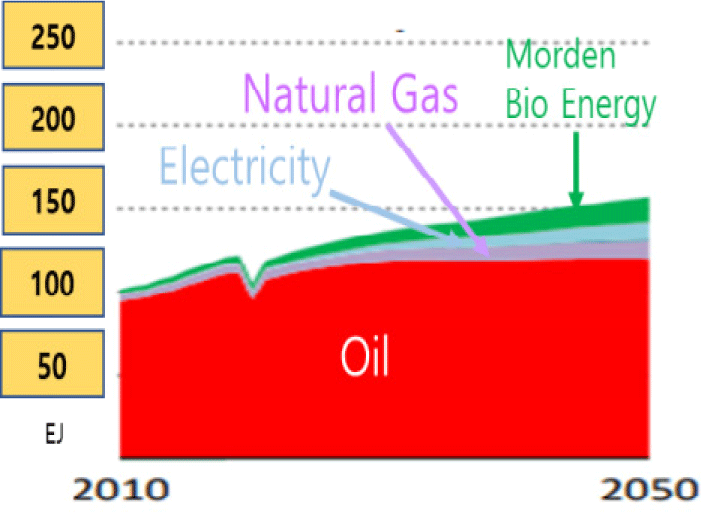
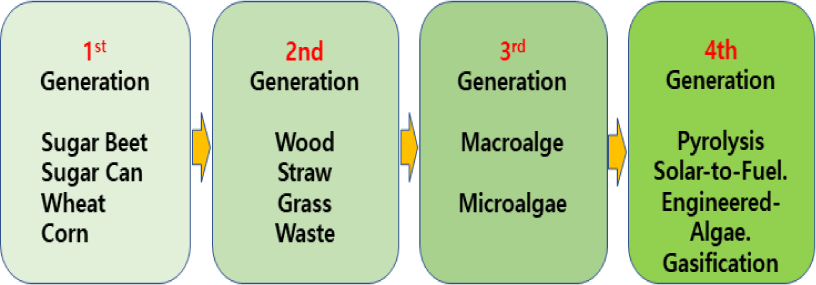
Biofuels are solid (such as biochar), liquid (such as ethanol, vegetable oil, and biodiesel), and gaseous (such as biogas, biosynthesis gas, and hydrogen) fuels (Demirbas, A., 2009). An aviation biofuel or bio-jet-fuel or bio-aviation fuel is a biofuel used to power aircraft and is said to be a sustainable aviation fuel.
Referring to Fig. 2, helps in understanding the different generations of biofuels. The International Air Transport Association considers it a key element to reducing the greenhouse gas and carbon footprint with in the environmental impact of aviation.
Aviation biofuel could help decarbonize medium and long-haul air travel generating most emissions, and could extend the life of older aircraft types by lowering their carbon footprint (Wikipedia Aviation Biofuel). Bio-jetfuel using oil-based finishing converts hydro-treating, deoxygenation and iso-merization, hydro-cracking reactions. The biomass delay process involves intermediate conversion, which regulates the gasification reaction, as well as current conversion, which governs biochemical or degradation processes. Additionally, sugar conversion controls biochemical processes, while bio-oil is produced through a real-time thermal ashing process, ultimately being converted into bio-oil. These syngas, individual, sugar and bio-oils are manufactured by upgrading to bio-scale oils through synthesis, wall or manipulation processes. In addition, bio-jet fuel produced by the Fischer-Tropsch (F-T) process has been approved by ASTM (D7566) for blending with jet fuel at up to 50% (Chuck et al., 2013). The specifications required for jet fuel include: 1) minimum energy supply, 2) maximum allowable freezing point, 3) maximum allowable deposit formation, 4) maximum allowable kinematic viscosity, 5) maximum allowable sulfur content, 6) acceptable lubricity, 7) maximum acidity, 8) minimum electrical conductivity, and 9) minimum acceptable flash point (Kim et al., 2015).
For energy solutions, the use of sustainable fuels can be a long-term solution. For example, fuels produced from renewable energy sources obtained from nature without using fuels, such as wind, solar, tide, and hydroelectric power are recognized as sustainable fuels. Global warming issues with synthetic fuel would ultimately also make it unsustainable. Biofuels are derived from plants and may be considered sustainable if a sufficient quantity of crops can be grown to support the demand for fuel. Unfortunately, many nations may not have the capacity to cultivate enough fuel feedstock to generate the amount of biofuel required to meet their energy demands. For example, Germany’s land mass consists of 34 percent arable land. To replace only the diesel fuel demand of Germany (56.6 million-tonnes in 2005) with bio-diesel would require four times the land area and the replacement of every current crop with rapeseed which is Europe’s favorite bio-diesel feedstock (National Renewable Energy Laboratory, 2004). If the effort to protect the environment results in food shortages, it may have unintended negative consequences. This could pose a significant challenge for most countries, with the exception of those with relatively abundant arable land and advanced agricultural sectors, such as Brazil, Argentina, and Australia. Biofuel and Bio-jet have started to be referred to as Sustainable Aviation Fuel (SAF) in the aviation industry. SAF is a sustainable fuel that replaces traditional fossil fuel-based aviation fuel and is produced from various renewable resources, including biomass, waste materials, and synthetic fuels. To validly use the term ‘‘sustainable’’ they must meet sustainability criteria such as lifecycle carbon emissions reduction, limited fresh-water requirements, no competition with needed food production (like first generation biofuels) and no deforestation (IATA, 2024).
Because synthetic jet fuel and bio-jet fuel have approximately the same weight, volume, and performance characteristics of current oil-derived jet fuel, they would be relatively easy to use and not affect the design of the airplane. But an ethanol-fueled airplane requires a larger wing and engines, thus reducing the airplane’s fuel efficiency. Also, hydrogen-powered airplanes need a larger tank, which reduces the fuel efficiency of short-range aircraft (NASA, 2006).
Consequently, aircraft developers are modifying the traditional shape of aircraft to create more fuel-efficient models. As shown in Fig. 4, Airbus is working toward designs where lift is generated from the fuselage, addressing the limitation of traditional aircraft, which do not produce lift from the fuselage.
Airbus’s development department is reviving plans to create a “no-tail” blended wing body aircraft (BWB), which literally takes the shape of a giant bat. Airbus has unveiled a scale model of this prototype design, claiming that it can carry hundreds of passengers. This innovation aims to improve fuel efficiency by over 20%. Additionally, researchers are exploring modifications to wing structures and the use of lightweight materials, which contribute to reduced aircraft weight and improved fuel efficiency.
Another concept currently under development is the Strut-Braced Wing (SBW) configuration. The strut of the SBW aircraft could reduce the maximum bending moment in the wing structure by significant amounts, typically up to 50%, which will significantly reduce the wing weight, thereby increasing the wingspan and reducing the wing thickness and sweep (Hosseini et al., 2022).
The extension of wingspan is inherently constrained by limitations in structural strength. The addition of struts alleviates this issue, allowing the wingspan to reach its optimal length. Additionally, drag is reduced, and the high wing placement facilitates the installation of engines of various sizes.
Depending on the developer, the engine may be located either under the wings or at the rear of the fuselage. Introducing low-order estimates for the fuel required for warm-up, taxi, takeoff, climb, descent and landing, this translates to a 7.8% savings in block fuel over a 500 nm nominal mission. Similar fuel burn savings are maintained over each of the off-design conditions, with estimates ranging from 7 to 8% (Chau et al, 2022). But according to NASA, this truss-braced wing design is supposed to deliver 10% better fuel efficiency if paired with conventional jet engines and up to 30% better efficiency when paired with an advanced jet engine (Host and Iannotta, 2023).
The enhanced fuel efficiency of the Flying-V aircraft (Fig. 6) compared to conventional models is well-supported in studies published by TU Delft. Conducted in collaboration with Airbus, this research provides a technical evaluation of the Flying-V’s unique design, emphasizing the aerodynamic benefits and structural optimizations achieved by its V-shaped configuration. These elements are identified as central contributors to the Flying-V’s significant fuel savings. The design integrates passenger and cargo spaces directly within the wings, effectively reducing both drag and overall aircraft weight. These optimizations together contribute to fuel economy improvements, projected to exceed 20% compared to the Airbus A350, making the Flying-V a promising model for sustainable aviation advancements.
The findings suggest that the Flying-V could achieve fuel efficiency improvements of over 20% relative to the Airbus A350 (De Zoeten, 2022).
According to the developers, the Flying-V has the advantage of being usable without the need for separate modifications to existing airport facilities.
Eviation Aircraft, a start-up developing a new concept electric aircraft, has made its first flight, paving the way for completely carbon-free commercial aircraft. The US startup Aviation conducted its first full-scale test with the new ‘Alice’ aircraft, the ‘Capital’ media reported. The electric motor unit, which is less than 18 meters long and can accommodate nine passengers in its standard configuration, took off from Moses Lake Airport in Washington State. Alice made an eight-minute first flight before landing on an American runway (Moon, 2022). Small electric propulsion aircraft are now on the threshold of commercialization; however, challenges persist in achieving long-distance and extended-duration flights. Currently, Joby Aviation’s electric aircraft, Joby S4, is conducting test flights to obtain FAA certification, while Archer Aviation is also pursuing FAA certification procedures for its Midnight model, aimed at commercial deployment. Consequently, the development of electric propulsion aircraft is progressing continuously, and further technological advancements are anticipated over time. An electric propulsion aircraft refers to an aircraft that drives an electric motor using power obtained from fuel cells, solar cells, or secondary batteries within a system in which a traditional internal combustion engine or gas turbine serves as the primary power source. Such aircraft do not rely on fossil fuel-based internal combustion engines, resulting in no exhaust emissions, making them environmentally friendly with additional advantages such as reduced noise and vibration. However, due to the significantly shorter endurance of batteries compared to conventional internal combustion engines, the widespread adoption of electric propulsion may face challenges.
Additionally, electric aircraft encompass not only those powered solely by electric motors but also include systems that enhance the extraction and utilization of electricity from conventional engines to support environmental sustainability. This includes approaches to improve the energy efficiency of both fuel and engines, which fundamentally contributes to reducing carbon dioxide emissions. In large commercial aircraft, one generator per engine typically performs electrical generation. The number of generators connected to each engine may vary depending on the aircraft type, with multiple generators, including backup systems, potentially being installed to ensure redundancy and compliance with Extended Range Twin Operations (EDTO) requirements. EDTO refers to regulations that permit twin-engine aircraft to fly for extended periods on routes where they are far from emergency landing airports. In this context, redundant power supply systems play a crucial role.
An additional source of electric power on an aircraft is the auxiliary power unit (APU), which typically provides power when the aircraft is on the ground (Sarlioglu et al., 2015). Recently, advancements have been made in both environmental preservation and cost reduction for airlines by utilizing airport-provided electrical power on the ground, instead of relying on Auxiliary Power Units (APU) that emit carbon dioxide. Therefore, most of large airports around the world use the airport’s ground power whenever possible rather than operating an APU. This ground power is called the Ground Power System (GPS) and is connected to the Aero-Bridge. Cargo terminals with longer waiting times than passenger terminals have become more reliably GPS-enabled. Utilizing ground power (GPS) not only contributes significantly to reducing carbon dioxide emissions the airports but is also substantially more cost-effective than operating the APU, offering approximately a fivefold reduction in costs.In theory, higher mechanical speed electric machines are preferable because as the mechanical speed increases, the weight and volume of the electrical machine decreases for a desired power capability. In addition, the more electric architecture introduces the need for power electronics to drive the electric motor, and as a result the opportunity to replace current induction machines with permanent magnet motors is presented (Sarlioglu et al., 2015). Permanent magnet machines are preferable because they have inherently higher power density and efficiency compared to induction motors (Ede et al., 2007). Although there is an increase in component cost and complexity with the addition of individual power electronic converters for electric machines, the positive tradeoffs include the ability to choose higher operating speeds of the motors, which reduces the weight and volume of the motor (Fernando et al., 2011).
NASA’s future goals for civilian transport aircraft reveals that there are opportunities to employ multi megawatt machines for generation and propulsion to achieve aircraft with less noise, high fuel and energy efficiency and reduced emissions. The efficiency, weight, volume, reliability, fault-tolerance, and cost of electric machines, power electronics, and energy storage systems (such as batteries and fuel cells) represent key areas of research and development opportunities.
III. Conclusion
To achieve net-zero emissions by 2050, significant advancements in alternative fuels and collaboration among the aviation, energy, research, and finance sectors are essential. SAF (Sustainable Aviation Fuel) sources such as biofuels, hydrogen, and electricity, along with innovative aircraft designs, are crucial for reducing the aviation sector’s carbon footprint. For example, aircraft like the Flying-V, which integrates passenger and cargo space into a V-shaped wing, offers about 20% more fuel efficiency compared to existing models like the Airbus A350 (De Zoeten, 2022). It has been observed that the developers of innovative aircraft concepts such as blended-wing body aircraft, strut-braced wing aircraft, and the Flying-V are aiming for a 20% reduction in fuel consumption compared to current aircraft models.
The development of SAF (Sustainable Aviation Fuel) continues, especially as an alternative to reduce carbon emissions during long-haul flights. While electric aircraft show promise for short-haul routes, current limitations in battery longevity and energy density remain.
Progress in ground power systems and airport electrification also contributes to reducing aviation’s carbon footprint. The expansion of renewable energy sources like wind, solar, and tidal power opens pathways to lower carbon emissions.
Although the aviation industry faces challenges regarding the efficiency of SAF (Sustainable Aviation Fuel) and electricity, ongoing innovation is crucial. Improving aircraft fuselage designs to enhance aerodynamic efficiency and adopting new technologies to reduce drag and emissions are also necessary. However, transitioning to fully alternative fuels will take time and requires substantial research and development. While biofuels are often recognized for their advantages such as greenhouse gas reduction, decreased air pollution, and biodegradability, environmental concerns arise during their production process. This highlights the need to explore alternative resources, such as second-generation biofuels produced from non-food crops and third-generation biofuels based on algae. Some argue that biofuel production could lead to deforestation, expansion of agricultural land, and rising food prices, potentially resulting in increased carbon emissions. Therefore, the efforts of airlines to reduce carbon dioxide emissions have been more clearly aligned with environmental aspects through the transition from biofuels to SAF (Sustainable Aviation Fuel), with the terminology now shifting to SAF. In the end, for an alternative fuel to be considered as SAF, it must reduce lifecycle carbon emissions, have limited freshwater requirements, not compete with food production (like first-generation biofuels), and must not cause deforestation. In other words, it must meet the sustainability criteria defined by IATA. Starting in 2025, the EU requires that all flights departing from member state airports incorporate at least 2% Sustainable Aviation Fuel (SAF), marking a significant step toward greener aviation. This requirement will gradually increase to 6% by 2030, 20% by 2035, and 70% by 2050. Additionally, synthetic aviation fuel is expected to start at 0.7% in 2030 and reach 35% by 2050, playing a vital role in the fuel mix alongside SAF (ReFuelEU Aviation Regulation, 2023). Airports worldwide are also making efforts to reduce carbon dioxide emissions by replacing the use of aircraft Auxiliary Power Units (APUs) with regular electricity. Governmental green policies implemented by various countries are expected to further accelerate the efforts of the aviation industry, leading to the successful achievement of its goals.. To meet the 2050 climate targets, not only technological advancements but also policy support, financial investment, and a strong commitment to sustainability across the aviation sector are necessary. In this era of change, collaboration will form the foundation for a sustainable aviation future, linking immediate solutions like SAF (Sustainable Aviation Fuel) with long-term innovations in electric and hydrogen aircraft propulsion.








